Discover the rewarding experience of cultivating incredibly long, tender, and delicious yardlong beans (Vigna unguiculata subsp. sesquipedalis), also known as asparagus beans or Chinese long beans, right in your own garden. These vigorous climbers are not only productive but also add a unique vertical element. This guide provides everything you need to know to grow long beans successfully from seed to harvest.
Understanding Long Beans (Yardlong Beans)
Often reaching lengths of 12 to over 30 inches (30-75+ cm), the beans discussed in this guide are distinct from the common green beans many are familiar with. They belong to the cowpea family and are botanically classified as Vigna unguiculata subsp. sesquipedalis. They boast a slightly different, often described as nutty or asparagus-like, flavor and a less crisp, more tender-chewy texture when cooked. Thriving in heat, they are a popular staple in Asian cuisine, especially enjoyed in regions like Vietnam, China,…
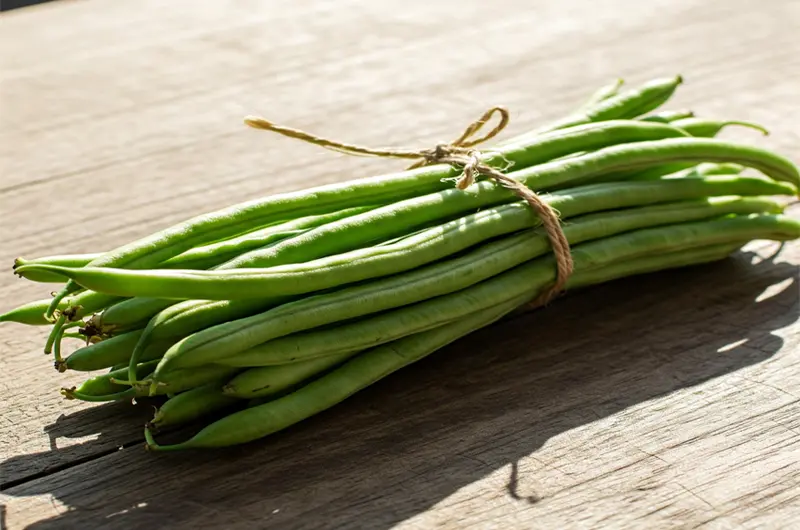
Clarifying the Names: Is a “Long Bean” always a “Yardlong Bean”?
It’s important to clarify the common names associated with Vigna unguiculata subsp. sesquipedalis, as terminology can sometimes be confusing.
- Synonyms for This Bean: In horticulture and cooking, the terms Yardlong Bean, Asparagus Bean, Chinese Long Bean, and often simply Long Bean are used interchangeably to refer specifically to Vigna unguiculata subsp. sesquipedalis. These names all point to the same heat-loving vine that produces distinctively elongated pods.
- Potential Confusion: The term “long bean” is descriptive. Occasionally, it might be used informally to refer to any bean variety producing pods longer than typical bush beans. This could include certain varieties of the common bean (Phaseolus vulgaris), such as some pole beans or runner beans, which might grow 6-10 inches long.
- Key Differences: However, these longer varieties of Phaseolus vulgaris are botanically distinct from Yardlong Beans (Vigna unguiculata subsp. sesquipedalis). They differ in:
- Species: Belonging to different plant families/species with different growth habits and needs.
- Pod Length: Common beans rarely, if ever, reach the extreme lengths (1.5 to 3 feet) characteristic of Yardlong beans.
- Texture & Flavor: Yardlong beans typically have a denser, more flexible pod and a distinct flavour profile compared to the common green bean.
- Focus of this Guide: Throughout this article, when we use the term “Long Bean,” we are specifically referring to the Yardlong Bean / Asparagus Bean, Vigna unguiculata subsp. sesquipedalis.
Getting Started: Preparing to Grow Long Beans
Success begins before you even plant a seed. Proper planning ensures your beans have the best environment to thrive.
Choosing Long Bean Varieties
Several varieties are available, differing slightly in color (light green, dark green, reddish-purple), length, and growth habit. Some popular choices include:
- ‘Green Pod Kaohsiung’
- ‘Liana’
- ‘Red Noodle’ (distinctive reddish-purple pods)
- ‘Stickless Wonder’ (a more bush-like variety, though still benefits from some support) Research varieties suited to your climate and available growing space.
Selecting the Ideal Planting Site
- Sunlight: Long beans demand full sun – at least 6-8 hours of direct sunlight daily is essential for vigorous growth and pod production.
- Soil: They prefer fertile, well-draining soil rich in organic matter. Amend your planting area with compost or well-rotted manure before planting. Aim for a soil pH between 6.0 and 7.5. Avoid waterlogged areas, as this can lead to root rot.
How to Plant Long Beans
Long beans are typically grown from seed sown directly into the garden once the weather has reliably warmed up.
Best Time to Plant Long Beans
Long beans are warm-season vegetables.
- Wait until all danger of frost has passed and the soil temperature has reached at least 65°F (18°C). Planting in cold soil will lead to poor germination and weak growth.
- In most temperate climates, this means planting from late spring through early summer. In tropical or subtropical regions, they can often be grown year-round or during specific dry/warm seasons.
Sowing Your Long Bean Seeds
- Prepare the Soil: Loosen the soil to a depth of about 12 inches (30 cm) and incorporate compost.
- Install Support First: It’s crucial to set up your trellis, poles, or netting before planting to avoid disturbing the young roots later.
- Sowing Depth: Plant seeds about 1 inch (2.5 cm) deep.
- Spacing: Space seeds about 4-6 inches (10-15 cm) apart along the base of your support structure. If planting in rows without individual supports like poles, space rows about 3-4 feet ( approx 1 meter) apart to allow for airflow and easy harvesting.
- Watering: Water gently but thoroughly after planting. Keep the soil consistently moist until germination occurs, usually within 7-14 days depending on conditions.
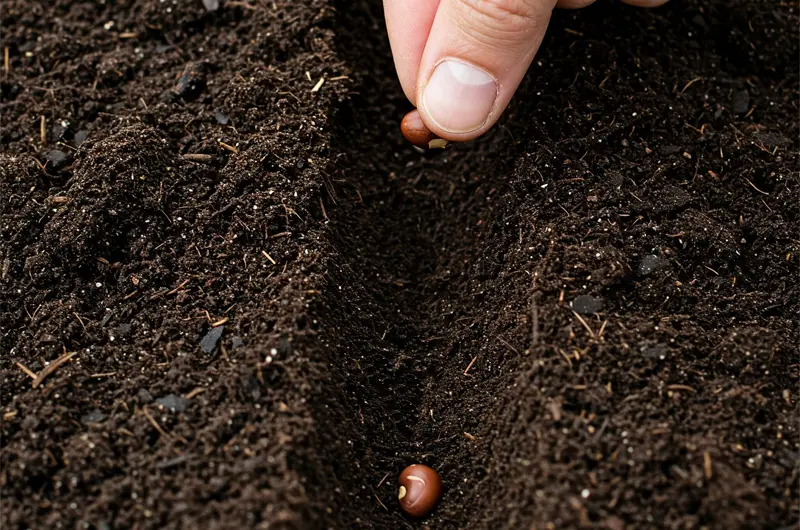
Essential Support: Trellising Your Beans
Long beans are vigorous climbers and require sturdy support to grow vertically. This keeps the plants off the ground, improves air circulation (reducing disease risk), makes harvesting easier, and prevents the incredibly long pods from kinking or rotting on the soil.
- Options: Use tall stakes (at least 6-8 feet/1.8-2.4 meters), bamboo poles arranged in a teepee, sturdy netting, fences, or cattle panels.
- Timing: Install support at the time of planting or just before.
- Training: Gently guide young vines onto the support structure if needed; they will typically climb readily on their own once established.
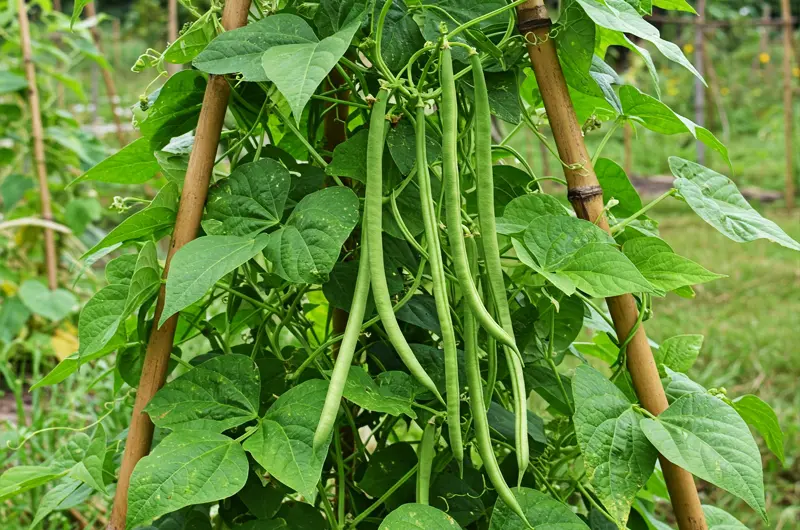
Long Bean Care Throughout the Season
Consistent care ensures healthy plants and a bountiful harvest. This includes proper watering, feeding, and pest management.
Watering Requirements for Long Bean Plants
- Consistency is Key: Provide consistent moisture, especially during flowering and pod development. Aim for about 1 inch (2.5 cm) of water per week, either from rain or irrigation.
- Avoid Water Stress: Drought stress can lead to flower drop and reduced pod set.
- Watering Method: Water at the base of the plants (using drip irrigation or a soaker hose) to keep foliage dry and minimize fungal disease risk. Avoid overhead watering if possible.
Fertilizing Your Growing Beans
- Initial Boost: If your soil wasn’t heavily amended with compost initially, you can apply a balanced fertilizer at planting time.
- Nitrogen Fixers: Like other legumes, long beans can fix atmospheric nitrogen in their root nodules. Therefore, they generally don’t require high-nitrogen fertilizers once established. Too much nitrogen can encourage excessive leafy growth at the expense of flowers and pods.
- Mid-Season Feed (Optional): If growth seems slow or leaves look pale, a side-dressing of compost or a low-nitrogen fertilizer (like one formulated for tomatoes or vegetables, often with numbers like 5-10-10) can be beneficial during the peak growing season.
Managing Pests and Diseases
While relatively robust, long beans can encounter some issues:
- Common Pests: Aphids, spider mites, bean beetles, and stink bugs can sometimes be problematic. Inspect plants regularly. Use insecticidal soap, neem oil, or strong water sprays for control. Encourage beneficial insects.
- Common Diseases: Powdery mildew, rust, and root rot (in poorly drained soil) can occur. Ensure good air circulation by proper spacing and trellising. Avoid overhead watering. Remove and destroy infected plant parts promptly. Choose disease-resistant varieties when possible.
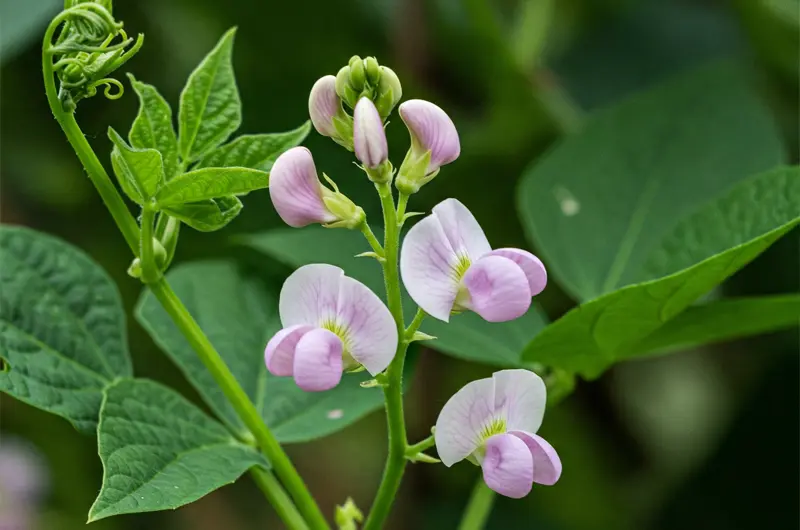
Harvesting Your Yardlong Bean Bounty
Harvesting at the right time ensures the best flavor and texture and encourages the plant to produce more pods.
When to Pick Long Beans
- Size: Harvest pods when they are young and tender, typically about the thickness of a pencil (1/4 to 1/2 inch or 0.6-1.2 cm in diameter) and before the individual beans inside start to swell noticeably. Length varies by variety but aim for 12-20 inches (30-50 cm) for many common types, though they can get longer.
- Texture: They should feel firm but flexible and snap easily. Overly mature beans become tough and fibrous.
- Frequency: Check plants every 1-3 days during peak season, as pods develop quickly in warm weather.
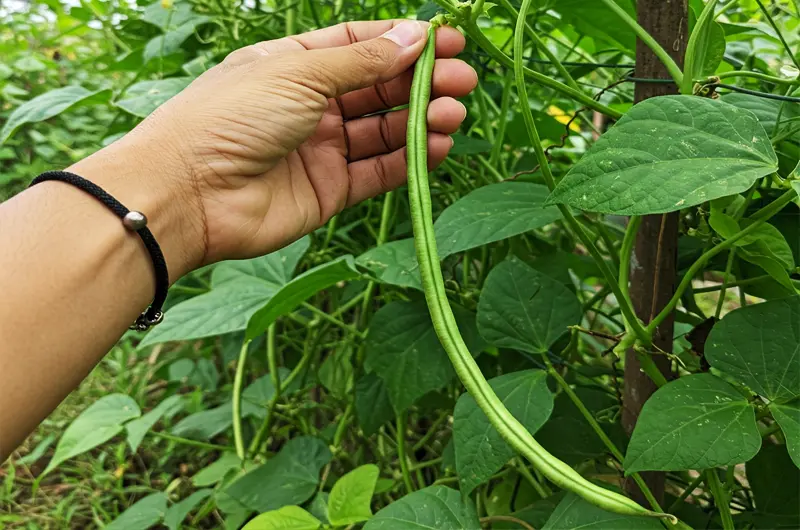
How to Harvest for Continuous Yield
- Method: Gently grasp the pod near the stem and snap it off cleanly, or use clean scissors or pruning shears. Avoid tugging the vine, which can damage it.
- Regular Picking: Consistent harvesting signals the plant to produce more flowers and pods. If pods are left to mature fully (for seed saving), the plant will slow down its production of new pods.
Storing and Enjoying Your Harvest
Freshly picked long beans are best used quickly for optimal flavor and texture. Store unwashed beans in a plastic bag in the refrigerator’s crisper drawer for up to 3-5 days. They are versatile in the kitchen, excellent in stir-fries, steamed, sautéed, or added to curries and soups.
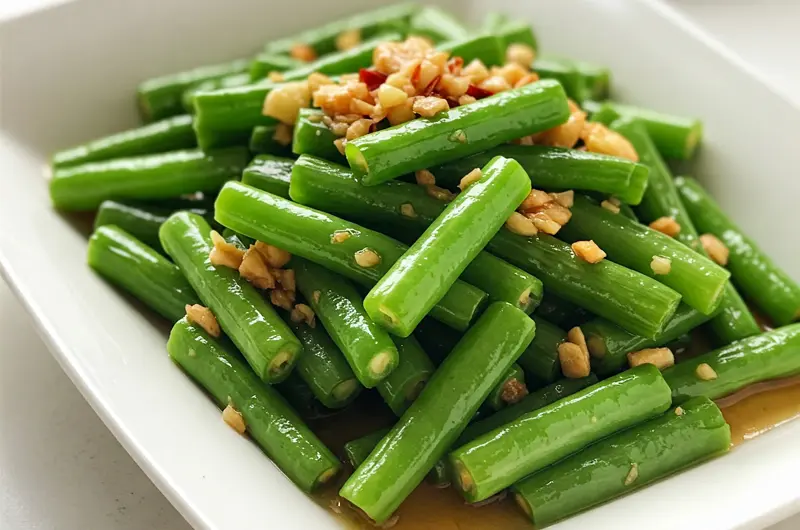
Growing long beans is a simple and highly rewarding endeavor, especially in warmer climates. By providing adequate sun, support, water, and harvesting regularly, you can enjoy a continuous supply of these unique and delicious beans throughout the growing season. Happy gardening!
Read More about Yardlong Bean: Yardlong Beans Uses Dishes: A Guide to Cooking & Benefits
Latest Posts:

